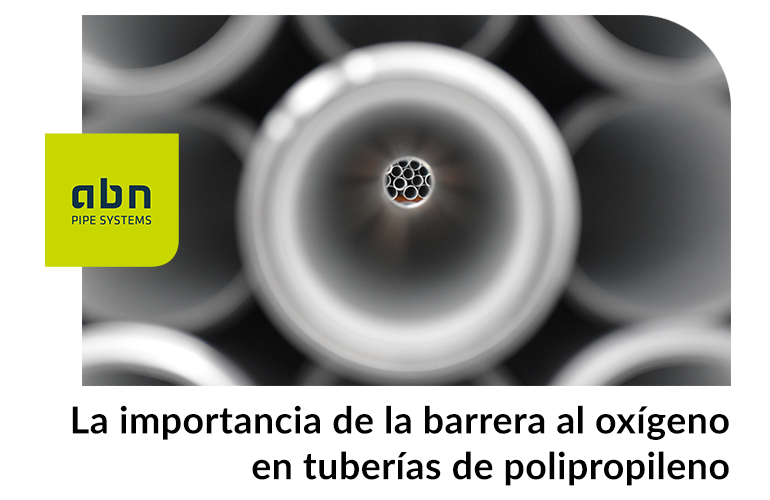En el camino de establecer un futuro más sostenible en el sector de la construcción, son muchos los avances en los que se está invirtiendo para conseguir soluciones que se ajusten a las demandas de los profesionales y al nuevo paradigma arquitectónico.
En esta línea, cada vez gana más importancia el uso de los tubos plásticos en el diseño de redes públicas, privadas e industriales para la evacuación, el saneamiento y abastecimiento de agua. Esta tendencia confirma la confiabilidad de los plásticos como materiales eficaces y eficientes para tuberías.
La permeabilidad de las tuberías de polipropileno
Uno de los materiales que proporcionan una mayor eficiencia son las tuberías de polipropileno; pero este tipo de tuberías, generalmente, presentan una peculiaridad: cierto nivel de permeabilidad a los gases.
Esta característica proviene de la estructura misma de los plásticos, compuesta por moléculas de hidrocarburos entrelazadas que, a su vez, albergan microhendiduras. Este diseño permite el paso del oxígeno, lo que significa que un tubo plástico expuesto a la atmósfera puede experimentar la propagación del oxígeno desde el exterior hacia el interior. Esta permeabilidad está sujeta a variaciones según las condiciones de la instalación, incluyendo la temperatura y presión del entorno.
Desafíos para los profesionales
En el mantenimiento de los sistemas de evacuación de aguas se presentan retos conocidos para los profesionales del sector, entre los que se incluye la oxidación de componentes, la formación de lodo (especialmente magnetita) y el desarrollo de biofilm. Todo esto a consecuencia de la penetración de oxígeno a través de las tuberías plásticas.
Es en este punto donde la gestión de la barrera al oxígeno se vuelve crucial para mantener el rendimiento y prolongar la vida útil de las instalaciones.
Sistemas actuales y limitaciones de las barreras antioxidantes
Para contrarrestar esta permeabilidad, los sistemas modernos incorporan barreras antioxidantes, a menudo compuestas de Etileno-Vinil-Alcohol (EVOH) o aluminio. Sin embargo, estas soluciones no están exentas de desafíos.
En el caso de los sistemas de polipropileno, se requiere retirar la capa de barrera para llevar a cabo soldaduras, lo que puede añadir complejidad a las instalaciones.
Además, surge una consideración importante en cuanto a sostenibilidad: al introducir estos materiales en las capas barrera, como el EVOH o el aluminio, el producto puede dejar de ser completamente reciclable, impactando en su huella ambiental.
Nuevas soluciones sostenibles y eficientes
La gestión de la barrera al oxígeno es un aspecto crítico en la eficiencia de los sistemas de tuberías de polipropileno. Por ello, a medida que la industria evoluciona, la búsqueda de soluciones que aborden esta cuestión sin sacrificar la sostenibilidad se vuelve primordial.
Existen nuevas soluciones con las que sin variar la estructura de la tubería y, a través de un proceso en el que, por medio de la incorporación de unos aditivos, se logra obtener el efecto barrera anti-oxígeno. Con este tipo de innovaciones, deja de ser necesario realizar procesos de eliminación de capas para hacer la soldadura y, además, el producto mantiene su reciclabilidad y sostenibilidad.
En este sentido, el compromiso con la innovación continua promete no solo mantener la eficiencia energética, sino también impulsar la sostenibilidad en toda la cadena de producción.
